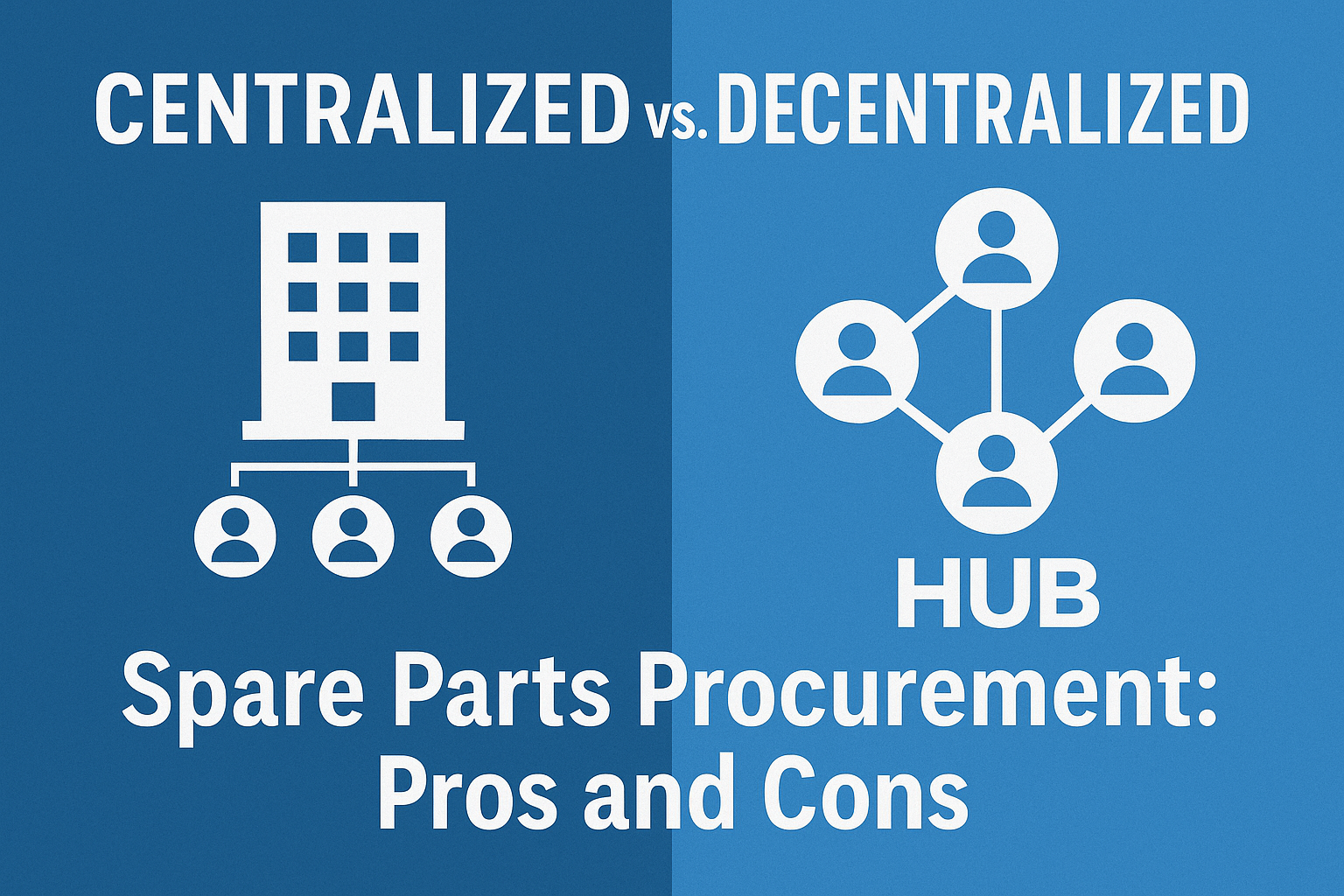No Item in Cart
Centralized vs. Decentralized Spare Parts Procurement: Pros and Cons
Introduction
One of the biggest decisions in industrial procurement strategy is whether to centralize or decentralize the purchasing of spare parts. Each model comes with its own strengths, risks, and use cases — and choosing the wrong one can lead to delays, higher costs, or inventory chaos.
In this post, we’ll break down both models, explore the pros and cons, and show how HUB supports both centralized and decentralized procurement through multi-user, multi-location management.
🏢 What Is Centralized Spare Parts Procurement?
All purchasing decisions are made by a central team — usually at HQ or a designated procurement department.
✅ Pros:
- Better negotiation power with suppliers
- Uniform procurement processes
- Centralized data and reporting
- Easier inventory standardization
❌ Cons:
- Slower response to urgent local needs
- Risk of disconnect from on-site operations
- More complex logistics across multiple locations
🏭 What Is Decentralized Spare Parts Procurement?
- Each department, site, or plant handles its own purchasing decisions — often independently.
✅ Pros:
- Faster response to urgent or local needs
- More autonomy for site-level engineers
- Tailored to specific equipment or conditions
❌ Cons:
- Higher costs from inconsistent vendor pricing
- Fragmented data and reporting
- Risk of duplicate orders or overstocking
🔀 Hybrid Model: The Best of Both Worlds
Many companies are now adopting a hybrid model:
- Central team manages vendor contracts, pricing, and policy
- Local teams initiate requests, manage stock, and handle day-to-day needs
💡 How HUB Supports Both Models
- Whether your organization is centralized, decentralized, or hybrid, HUB’s features allow you to structure your workflow accordingly:
🧑🤝🧑 Multi-User Roles & Access Levels
- Assign roles to engineers, buyers, managers, and finance at different locations — with custom permissions for each.
🌍 Location-Based Inventory & Order Tracking
- View procurement activity, stock levels, and reorder schedules by site or region.
📦 Unified Vendor Marketplace
- Even decentralized users purchase from HUB’s unified vendor pool — ensuring consistent pricing and faster sourcing.
📈 Centralized Analytics, Local Autonomy
- Head office sees big-picture reports across the company, while local teams operate with autonomy and speed.
✅ Conclusion
- There’s no one-size-fits-all solution. The right procurement model depends on your industry, operations, and risk appetite.
- But whether you run a centralized strategy or empower your teams locally, HUB gives you the tools to structure it the right way.
🔗 Explore HUB’s Multi-Site Procurement Tools: www.HUBspareparts.com
🔗 Book a Demo for Your Organization Structure: WhatsApp chat














